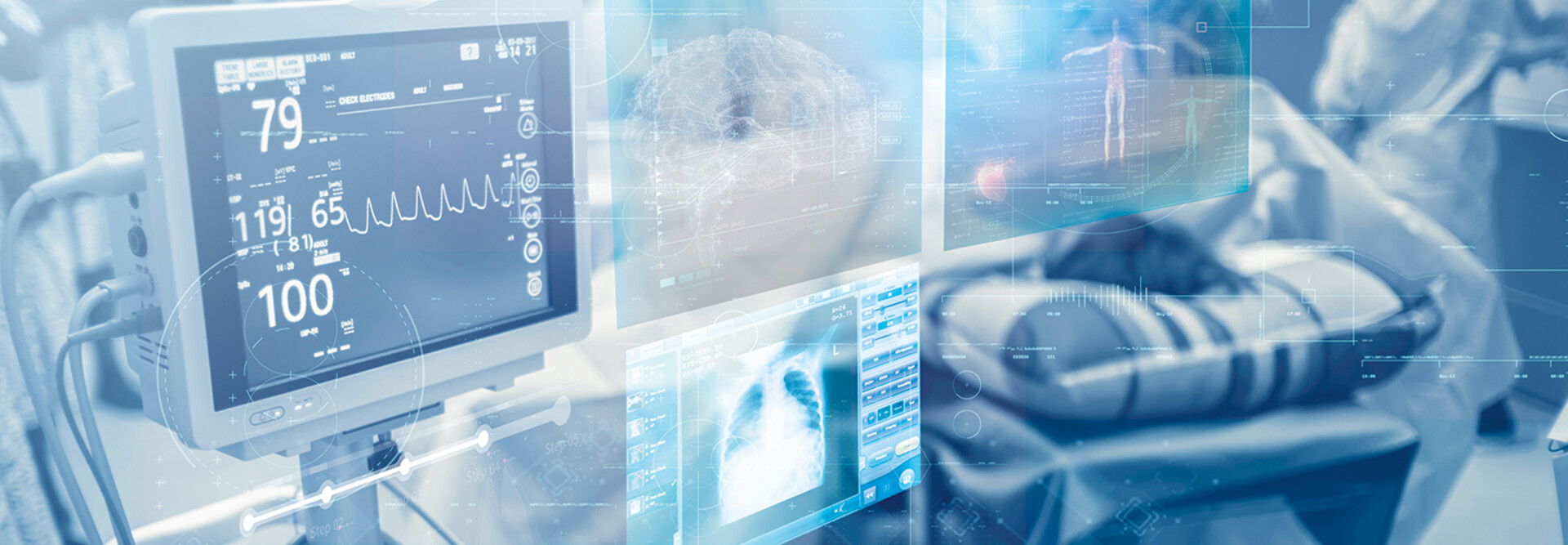“At Northwestern, we view this, really, as how we can leverage technology at its maximum, along with analytics and all the systems that can connect into it, to really enhance patient care overall, foster a better healthcare environment and truly improve operational efficiency,” Koczka says.
Some hospitals incorporate Patient Room ‘Next’ strategies, for which Artisight provides the foundational technology. Patient Room ‘Next’ incorporates virtual nurses, which Northwestern Medicine uses to support care teams.
“We started predominantly in virtual nursing and trying to utilize our nursing workforce more across the system. We might have a hospital 50 miles away, and we have nurses there providing care to our city hospital,” Koczka says, adding that nurses could discharge patients at other hospitals remotely.
Matt Stanton, executive director for Cleveland Clinic Digital Centers of Excellence, explains how virtual nursing helps ensure Cleveland Clinic can monitor selected patients at all times.
“We are able to virtually monitor patients effectively, and we’re able to scale up these services so that it’s not just a one-to-one, but that we can have our caregivers watching many patients concurrently to provide certain elements of care for them,” he says.
“When a patient needs this level of companion to monitor them, we bring a mobile camera into the room, and then a remote caregiver will be monitoring a handful of patients, as opposed to just one patient,” Stanton adds.
The Essential Technologies for Today’s Smart Hospitals
Here’s a look at the key technologies powering smart hospitals:
Predictive Analytics
One example of where Cleveland Clinic uses predictive analytics is in helping “hospital at home” scenarios identify which patients are good and safe candidates for receiving hospital levels of care in their own home, Stanton says.
Meanwhile, Northwestern Medicine built its own AI-driven analytics platform to help clinicians with decision-making, Koczka says.
“We’re using predictive analytics and machine learning where we can and trying to use those in real time to fine-tune processes or expedite clinical diagnoses where appropriate,” Koczka says.
“Smart used to mean it’s wired into the network, and you can access it from your phone, which is great. But now everybody wants to layer in an artificial intelligence component to it for predictability,” Perkins says.
EXPLORE: IT leaders share lessons learned from recent smart hospital initiatives.
Ambient AI
Ambient listening helps address challenges in a clinician’s workflow around documentation, according to Stanton.
Ambient technology allows Cleveland Clinic providers to use their mobile phones to listen to patients’ conversations during a medical visit so the provider can focus more on patients. The technology can sense who is speaking, whether it’s the provider, patient or patient’s caregiver. The ambient AI tool assembles information from patient encounters into suggested clinical documentation, and then providers review it to ensure accuracy, says Stanton.
“The ambient listening technology captures the entire conversation in the background, and at the end of the visit with the patient, the ambient technology understands what was clinically relevant and what was maybe not clinically relevant, saving providers time,” Stanton says.
Northwestern Medicine is also using ambient listening technology across its ambulatory care sites in both primary care and other specialties.
Smart Hospital TVs
Health systems can use smart hospital TVs for patient education, allowing physicians to share content on the TV to explain things like lab results, imaging materials or upcoming procedures to ensure there is good understanding, Stanton says.
“We do try to provide a lot of education to our patients about their condition, what to expect from procedures and their recovery process; a lot of that type of education could be provided on the television screen as well,” Stanton says. “The television can be an ideal portal for education of patients in the hospital.”
In addition to using smart TVs to provide entertainment, patient education and videoconferences with doctors and family members, Northwestern Medicine uses the smart devices to offer virtual rehab content at its rehab hospital, Koczka says. This treatment includes exercises after procedures.
“LG and Samsung supported Artisight’s work to build an operating system for the smart hospital TVs so that we could drive what’s displayed on the TVs with artificial intelligence. For example, Artisight uses a passive, two-factor verification process that allows doctors and nurses to ask the TV for information,” Gostine says. “At the nurse’s verbal request, we can send a signal to the TV to display the patient’s lab results or procedure time, because the nurse needs to know that and has the appropriate clearance to ask the system for those results. This prevents unauthorized access from visitors and frictionless access for staff at the same time. So, the smart hospital TV is one that has a smart operating system that gives you secure, voice-activated access to a set of application programming interfaces to control the TV, among other things.”
Physicians’ phones connect with Artisight’s indoor positioning system to display information (such as their name and role) on a sidebar on the TV, when they walk into a patient’s room.
“Artisight’s smart operating system provides APIs for almost anything you can imagine you’d want to do with a smart TV,” Gostine says. “Smart TVs can act as digital signage for nearly any data source connected to the hospital.”
DISCOVER: How do Wi-Fi upgrades support hospitals’ smart room initiatives?
Smart Hospital Beds
Smart hospital beds can integrate with several other monitoring technologies in a patient room, including temperature settings and speaker controls, Koczka says.
In addition, smart hospital beds allow us to monitor patients for pressure injury prevention, she says. They can also integrate with remote monitoring devices.
“The result of what your smart bed is doing has to be embedded in your workflows to gain real efficiency,” Perkins says.
Smart Hospital Digital Door Signs
Like smart TVs, digital door signs also connect to sensors in the hospital’s indoor positioning system.
“Matching the right information to the right person at the right time in the right place prevents errors, but also prevents staff burnout,” Gostine says. “Clinicians experience a lot of context switching and cognitive overburdening. Artisight reduces this by giving them only the information they need when they need it, in a way that is smart, and digital signage is a frictionless way to do that.”
How Smart Hospital Innovations Will Evolve
Going forward, smart hospital solutions must become even more integrated and interoperable as well as more secure, Perkins says.
Also, look for smart hospitals to connect with ever more capable AI, culminating in superintelligence (ASI) by 2032, but perhaps even earlier, Gostine predicts. He says ASI will “likely end diseases as we know them today by being able to detect and predict them before they are hard to treat. It will detect many things that humans cannot.”
Gostine adds that AI could detect cancer years before humans do on radiology studies. AI can also be used for mental health counseling chatbots.
“The world of AI is enabling new capabilities rapidly,” Gostine says. “Integrating these technologies into workflows is the key to unlocking their value, and that’s the genesis for our smart hospital thesis.”
However, as IBM suggests, some ethical and societal challenges must be addressed before ASI takes shape on a mass scale.











